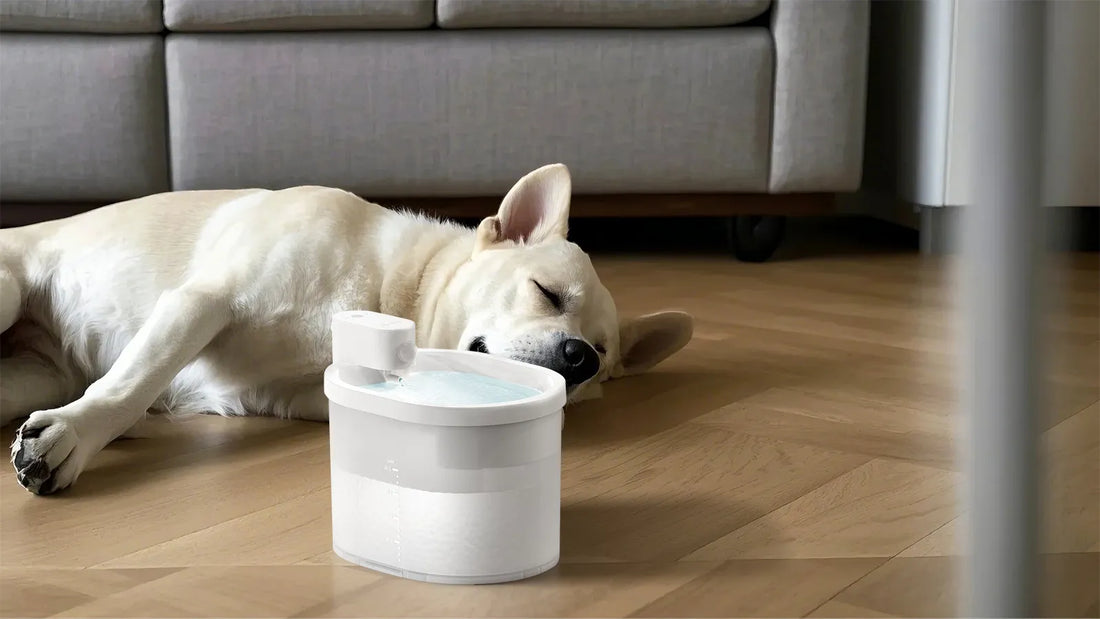Is your dog drinking more water than usual? While it might seem harmless at first, excessive water consumption in dogs can be a sign of underlying health issues. Understanding the causes, risks, and solutions is crucial for every pet owner. Let’s dive into the details to ensure your furry friend stays healthy and hydrated—just the right amount.
Why Is My Dog Drinking Too Much Water?
Dogs, like humans, need water to survive. However, when their water intake becomes excessive, it could indicate a problem. One common cause is polydipsia, a condition characterized by abnormal thirst. This can be triggered by various factors, including:
- Dehydration: Hot weather or vigorous exercise can lead to increased water consumption.
- Diet: A diet high in salt or dry food can make your dog thirstier.
- Medications: Certain medications, such as steroids, can increase thirst.
- Health Conditions: Diabetes, kidney disease, and Cushing’s disease are common culprits.
If your dog is drinking more water than usual, it’s essential to monitor their behavior and consult a veterinarian if the issue persists.
The Risks of Excessive Water Consumption in Dogs
While staying hydrated is vital, drinking too much water can lead to serious health risks. One of the most dangerous conditions is water intoxication, also known as hyponatremia. This occurs when a dog’s sodium levels drop dangerously low due to excessive water intake. Symptoms include:
- Lethargy
- Bloating
- Vomiting
- Loss of coordination
- Seizures
In severe cases, water intoxication can be fatal. Additionally, excessive water consumption can strain the kidneys and lead to other complications, especially in dogs with pre-existing health conditions.
How to Determine if Your Dog Is Drinking Too Much Water
So, how much water is too much? On average, a healthy dog should drink about one ounce of water per pound of body weight daily. For example, a 30-pound dog should consume around 30 ounces of water each day. However, this can vary based on factors like activity level, diet, and weather.
To determine if your dog is drinking excessively, measure their water intake over a few days. If they consistently consume more than the recommended amount, it’s time to investigate further. Keep an eye out for other symptoms, such as frequent urination, weight loss, or changes in appetite.
What to Do if Your Dog Is Drinking Too Much Water
If you suspect your dog is drinking too much water, the first step is to consult your veterinarian. They can perform diagnostic tests to rule out underlying health issues. In the meantime, here are some steps you can take:
- Monitor Water Intake: Keep track of how much water your dog drinks daily.
- Adjust Diet: Switch to a low-sodium diet or add wet food to increase moisture intake without overloading on water.
- Limit Access: If your dog tends to gulp water, provide smaller amounts at regular intervals.
- Encourage Rest: After exercise, allow your dog to rest and cool down before offering water.
Remember, every dog is unique, and what works for one may not work for another. Always seek professional advice tailored to your pet’s specific needs.
Preventing Excessive Water Consumption in Dogs
Prevention is always better than cure. To help your dog maintain a healthy water intake, consider the following tips:
- Provide Fresh Water: Ensure your dog always has access to clean, fresh water.
- Control Portions: Avoid leaving large bowls of water out all day, especially for dogs prone to overdrinking.
- Monitor Activity: Adjust water intake based on your dog’s activity level and the weather.
- Regular Check-ups: Schedule routine veterinary visits to catch potential health issues early.
By taking these proactive steps, you can help your dog stay hydrated without overdoing it.
Your dog’s health and well-being are in your hands. If you notice any changes in their water consumption, don’t ignore it. Early detection and intervention can make all the difference. Keep an eye on your furry friend, and remember—when it comes to water, balance is key.














